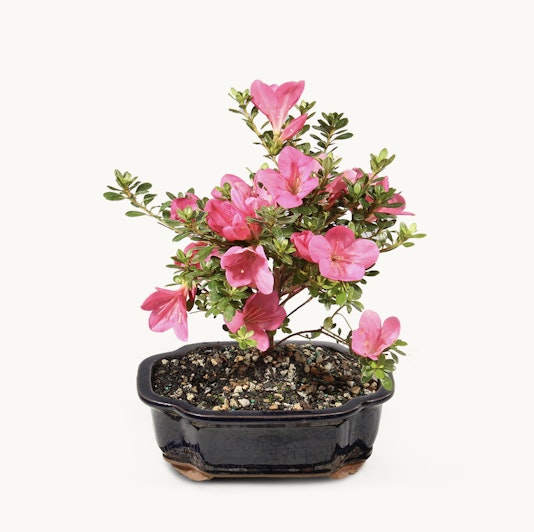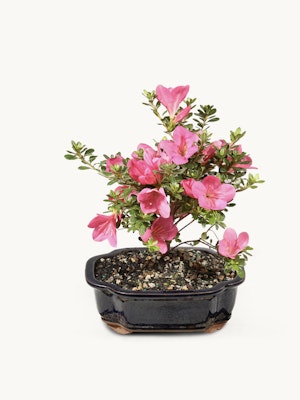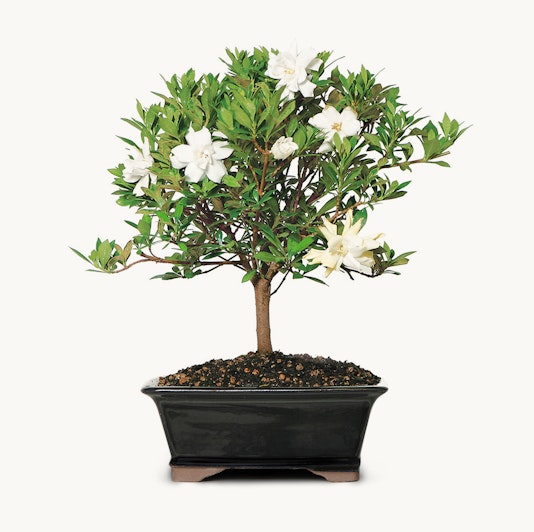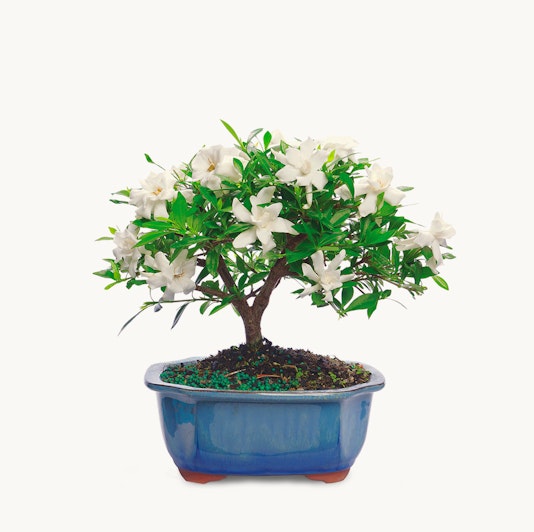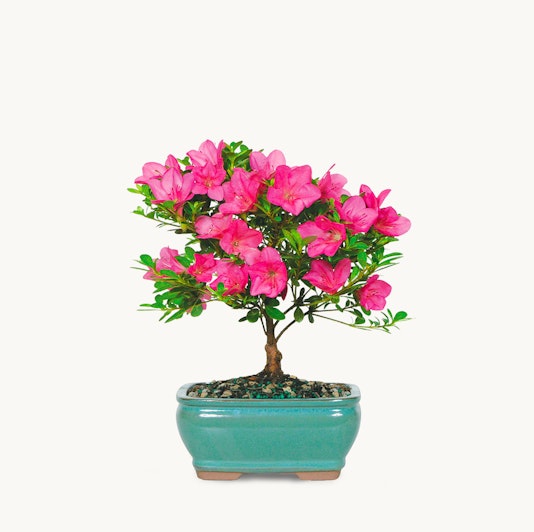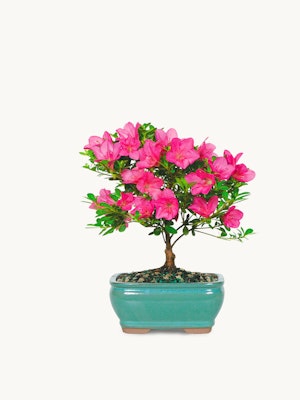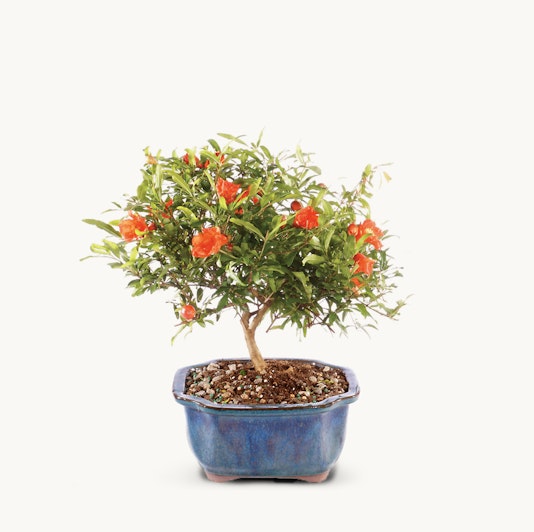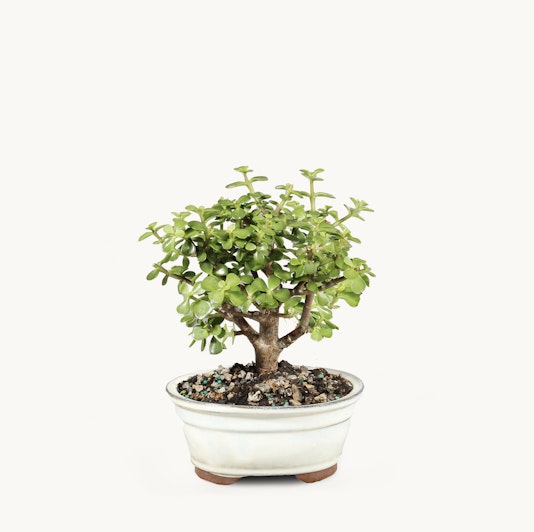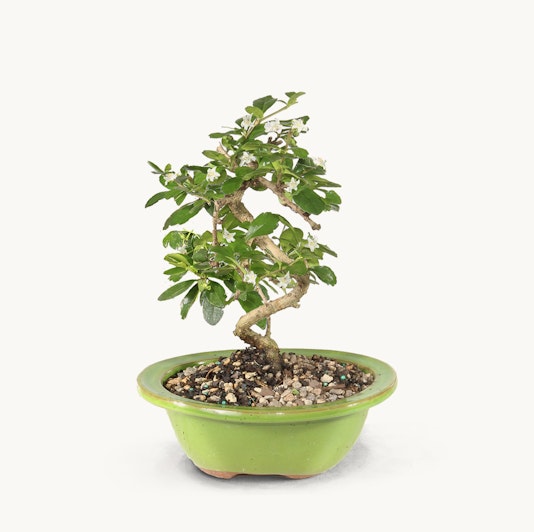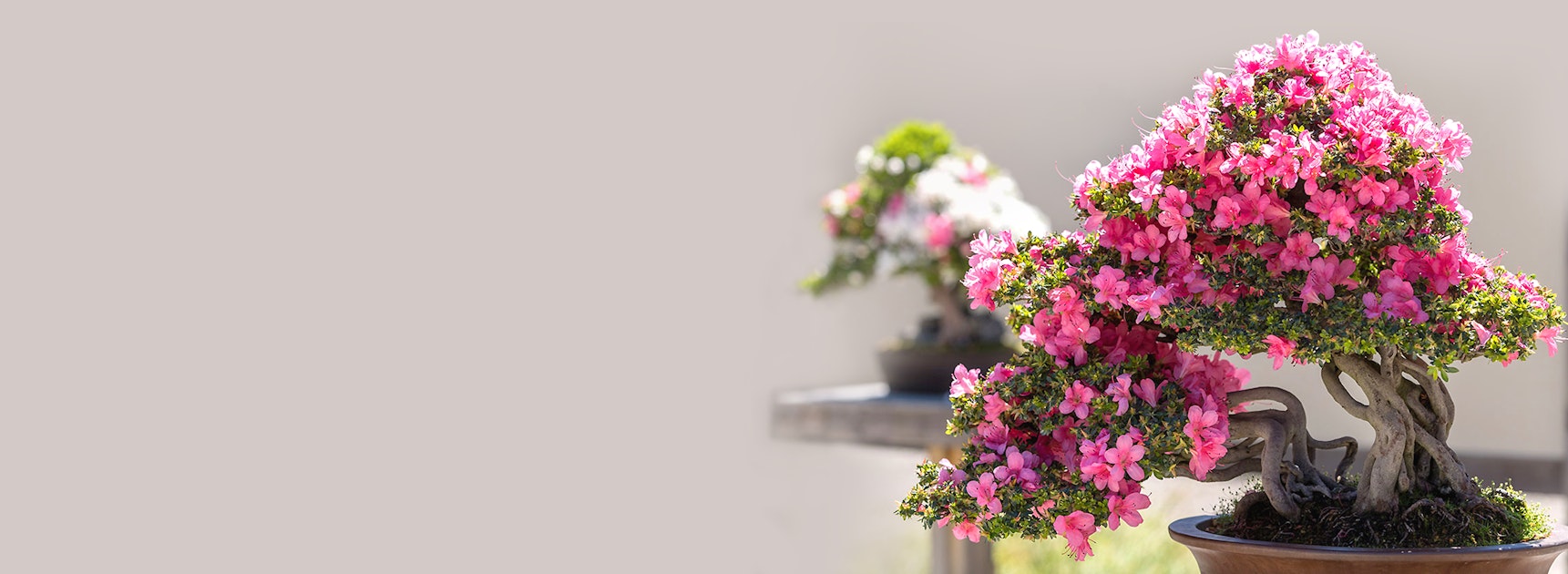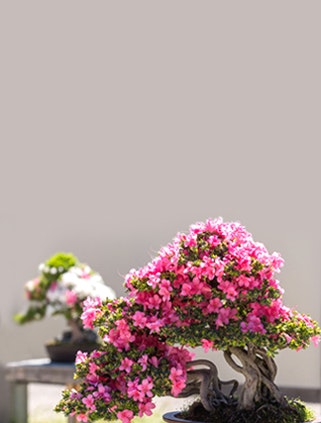Bonsai Tree Delivery
Grown in the US, our bonsai trees are sent directly to your door to ensure freshness. Explore our collection of beautiful Bonsai Trees.
Bonsai Tree Delivery
Buy Bonsai trees online
Your home is your sanctuary. And what does every great sanctuary need? Natural elements to help give it balance, color, and life. From the Green Mound Juniper to the Gardenia, the diverse selection of bonsai trees here at BloomsyBox are sure to help you or your recipient bring thoughtful equilibrium to your space. Simple as that.
Buy Bonsai trees online
Your home is your sanctuary. And what does every great sanctuary need? Natural elements to help give it balance, color, and life. From the Green Mound Juniper to the Gardenia, the diverse selection of bonsai trees here at BloomsyBox are sure to help you or your recipient bring thoughtful equilibrium to your space. Simple as that.
What Is a Bonsai?
The Japanese word bonsai translates to “planted in a container.” A bonsai, or bonsai tree, is a miniaturized tree designed to be grown in a container. Most bonsai are based on a traditional Japanese art form for cultivating and training these trees to turn them into masterpieces.
How Should I Water My Bonsai?
Typically, bonsai trees do best with moist soil. For this reason, never let your bonsai’s soil dry out completely. Thoroughly soak the soil in your container until water runs out of the drainage holes. If your bonsai is kept outdoors, water according to the season. This means daily watering in the spring, summer, and fall but less frequent watering in the winter. Whenever you water, also make sure you mist the leaves of your bonsai since these trees are generally meant to live in a humid environment. If you keep your bonsai indoors, one of the best ways to water it is to place ice cubes on the topsoil. As they melt, they will wet the soil. Use enough ice to ensure that the soil is kept thoroughly wet. It’s also a good idea to place your plants on top of humidity trays filled with small decorative stones. These stones will capture excess water and create a much-needed humid environment for your plants.
How Should I Fertilize My Bonsai?
Bonsai require regular fertilizer application. Most water-soluble, time-release fertilizers will work perfectly for a young bonsai tree. Use the fertilizer you choose according to the directions on the package. As your bonsai ages, you’ll want to ensure you’re using a slow-release organic fertilizer.
Can I Keep My Bonsai Indoors?
Absolutely! In some areas, bonsai may do better indoors, as long as they are provided adequate light and water. When moving your bonsai into a new environment, it may take a few weeks for them to acclimatize. While the plant is adjusting, it may lose up to 20% of its leaves, but this is completely normal. Ensure that your bonsai is kept in a sunny area, preferably near windows facing southeast or west. If needed, you may supplement natural sunlight with a grow light.
How Should I Prepare My Outdoor Bonsai for Winter?
While you may be tempted to bring bonsai inside for the winter, in most areas, it’s best for them to experience winter dormancy in their familiar environment. Protect their root systems by covering the soil with pine needles or mulch before the first frost. To keep your bonsai out of the worst winds, place them as close as possible to the south side of your house. If you live in a place with particularly brutal winter weather, you may instead bring your bonsai into a shed or garage to winter.
Should I Be Concerned about Insects and Diseases?
Just like any other plant, bonsai can be susceptible to pests and plant diseases. Rather than regularly treating your bonsai with chemicals, it’s best to simply keep a close eye on them. Keep your tree clean by briskly spraying the trunk and foliage periodically. If you notice any problems, reach out to your local garden center for advice.
Should I Repot My Bonsai?
You should repot your bonsai only every four to five years. Otherwise, the root system may become pot-bound. When repotting, ensure that you use a soil specially formulated for bonsai. When you first get your bonsai, you may be tempted to repot it immediately into a more attractive container, but it’s best to wait at least a year to ensure that it is well established before making such a drastic change.
